Throughout 2018, there was one name I could not escape.
Latumoni.
It was the name given to a village in Northeastern Assam, situated in the uppermost part of the Dibrugarh district. It was apparently so remote; it didn’t even show up as a physical location on Google Maps. (At least, not in English.) Stranger still, trying to find a definition to the name “Latumoni” proved equally as nebulous. This Wikipedia entry for a tree kept popping up.
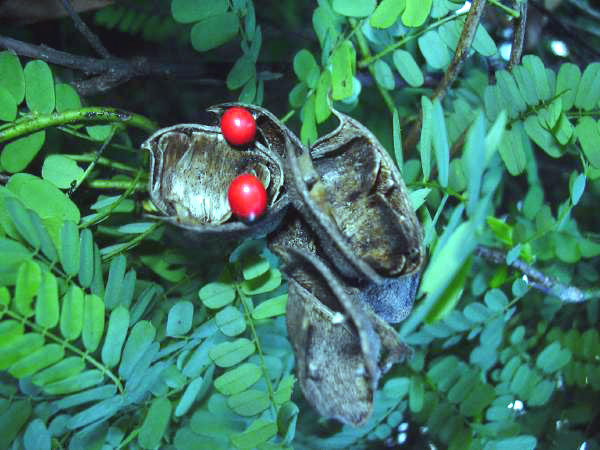
After double-checking with someone, I learned that—indeed—the Assamese name for that tree was “Latumoni”. Abrus precatorius (the science-y name for it) used to grow plentifully in the region, and the red seed pods were often used in decorations. How it became the name of the village proper is anyone’s guess.
What’s this all have to do with tea? I’m getting to that.
In the early 1990s, restrictions placed upon remote villages growing their own tea trees on small farm plots relaxed and waned a bit. Private growers could now sell leaf stock to larger factories and estates for a sum. Latumoni was one such village. However, as more growers cropped up, the asking price for leaf material decreased. To the point where such operations were no longer profitable; private growers could barely afford to pay the workers and stay afloat.
Due to the monopolization of the “bought-leaf-factory” model, prices for fresh leaf bottomed out between 1999 and 2001. Sailen P., the son of one such Latumoni village grower, found this to be unsustainable. He and his father originally set-up a 2-acre plot, later expanded it to 7 acres, and they originally started as a leaf-selling op.
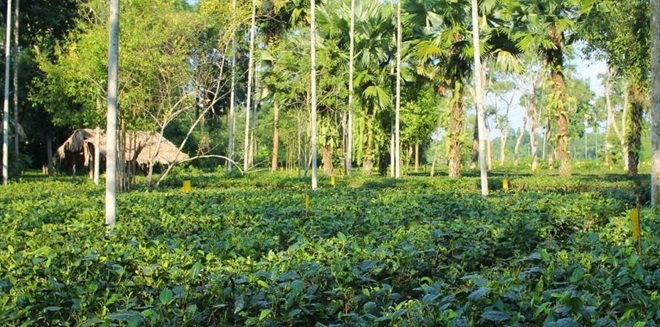
When the prices bottomed out, Sailen turned to other agronomist ventures to make ends meet. From other sources, he learned about organic farming practices, and also studied up on more traditional tea processing techniques. In 2010, he attended a workshop headed by another small-scale grower, and took away some inspiration from it. From his small plot, perhaps he could process his own organic tea, utilizing modern organic methods (sans pesticides), coupled with old-timey pan-frying practices. By 2013, he was producing his own handmade green teas. In 2016, the operation expanded even further.
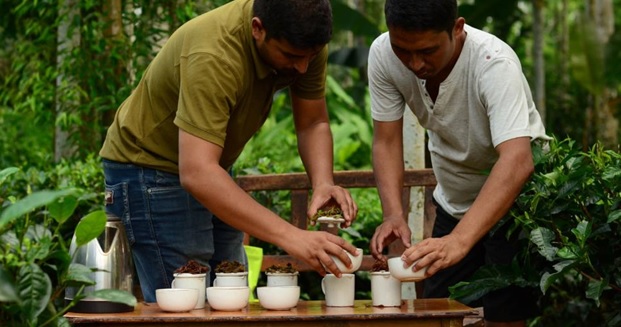
I’ll get back to that.
In June of 2018, I first encountered one of their teas. In Las Vegas of all places. Rajiv Lochan (of Lochan Tea) gifted me with a bag of samples. One such sample contained an unmarked second flush tea simply dubbed “Royal Tippy Gold”. No regional details. For all I knew at the time, it could’ve been a Darjeeling. Looked and smelled like an Assam, though, but a lot more vibrant than I was used to.
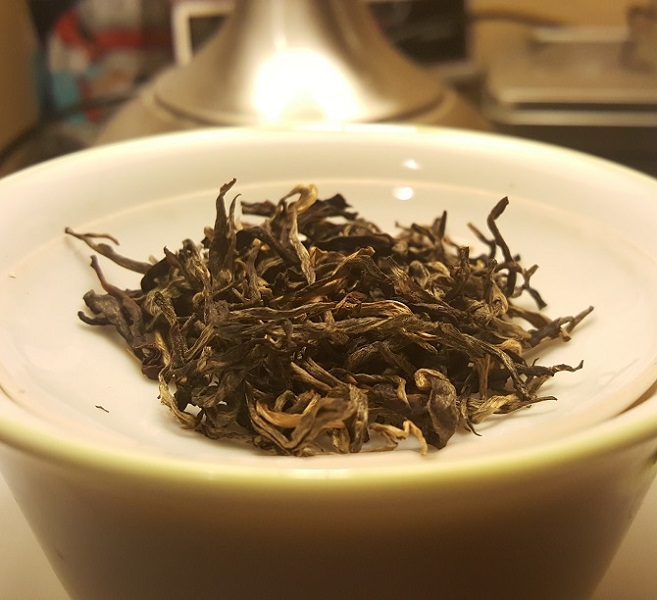
The whole leaves and buds were gorgeous, and gold-speckled as all heck. Dipping into it when I returned home, I immediately thought, Yep, that’s gotta be an Assam.
A second sample package from Lochan Tea confirmed as much. In that goodie bag was—not one, but two!—Latumoni second flush teas. The aforementioned Royal Tippy Gold, and another one called “Spring Gentle Black”.
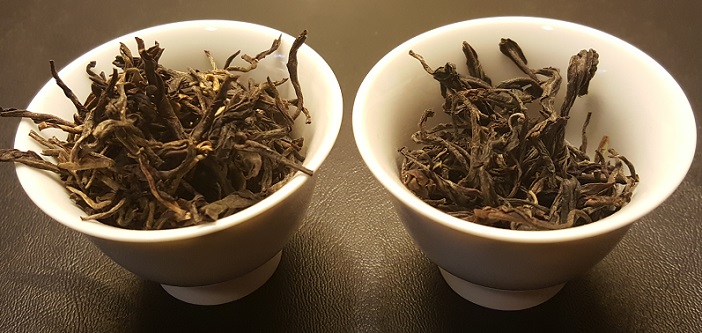
(Spoiler alert: gentle, it wasn’t.)
In July, I received another sample box from this fine gent.

Peter Jones, general manager of Trident Booksellers and Café in Boulder, Colorado. Yes, he’s exactly like that.
Among the wares he graciously passed my way was a first flush Assam black tea from—you guessed it—Latumoni.
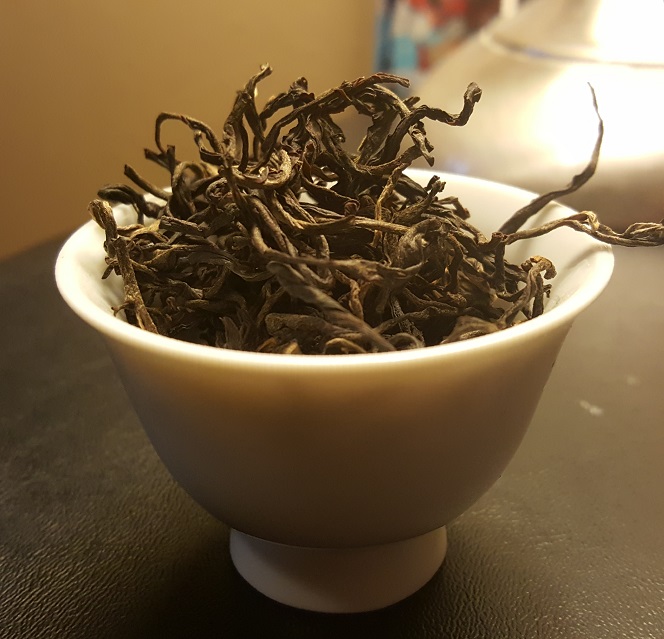
The leaves looked a lot the second flush offerings, but noticeably plumper. But they gave off the same vibrant aroma as the second flushes.
Fast-forward to the Fall of 2018, I received a clandestine message from an Assamese contact I respected, Upamanyu Borkakoty of The Tea Leaf Theory. I’d ordered a tribal Assam from him before, and enjoyed some other lovely teas he imparted to me. His wholesale operation was an interesting and innovative one.
Instead of being yet another supplier of Assams, he and his team actually worked with small gardens in Darjeeling, Sikkim, Arunachal Pradesh, and Assam. They encouraged these farms to experiment with processing their own teas. I had already tried teas from one such farm they worked with—Niroula in the village of Chota Poobong, Darjeeling, West Bengal. Tea Leaf Theory was instrumental in helping such outfits set up their own micro-processing units to function in a self-sustainable way.
Back in 2016—as they were still finalizing their experimental business model—they made contact with Sailen P., and struck a relationship that would expand the ambitions of his Latumoni garden. While Sailen mostly worked with making whole leaf teas by hand, Tea Leaf Theory did procure a small heater for his uses. If only to broaden the scale of the production of his black teas.
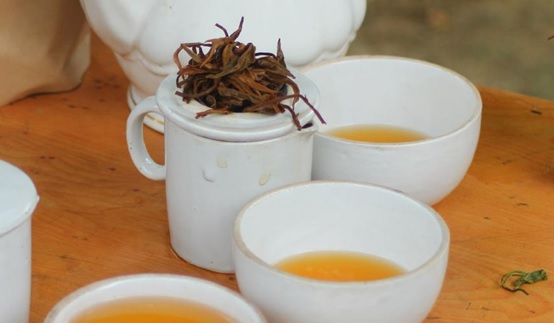
A mere two years later, I had two seasonal flushes worth of those wares from vendors that sourced from Tea Leaf Theory. That and Upamanyu wanted to send me some of Latumoni’s autumn batches to test out. This was an absolute first for me. Not only was I sampling teas from a small Assam garden—not a large estate or factory—but I was trying a year’s worth of product.
Once the autumnals arrived, I splayed out all five—count ‘em, five—seasonal Assams.
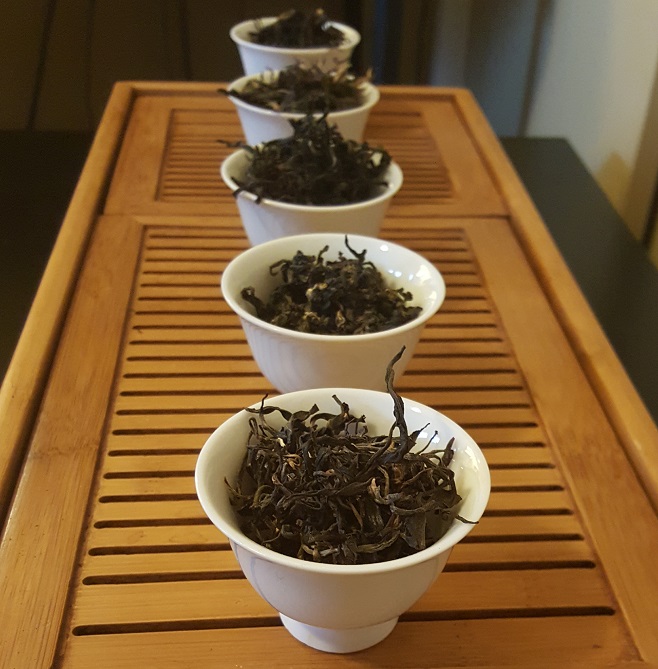
It took me two different days to get through all of them.
First Flush: “Wild” Black Tea
The dry leaves were long and thick, and the occasional unopened, gold-tipped bud appeared in the mix. The aroma they gave off was like the embers straight off the word MALT! But without any of the unrestrained dryness that comes with said scent.
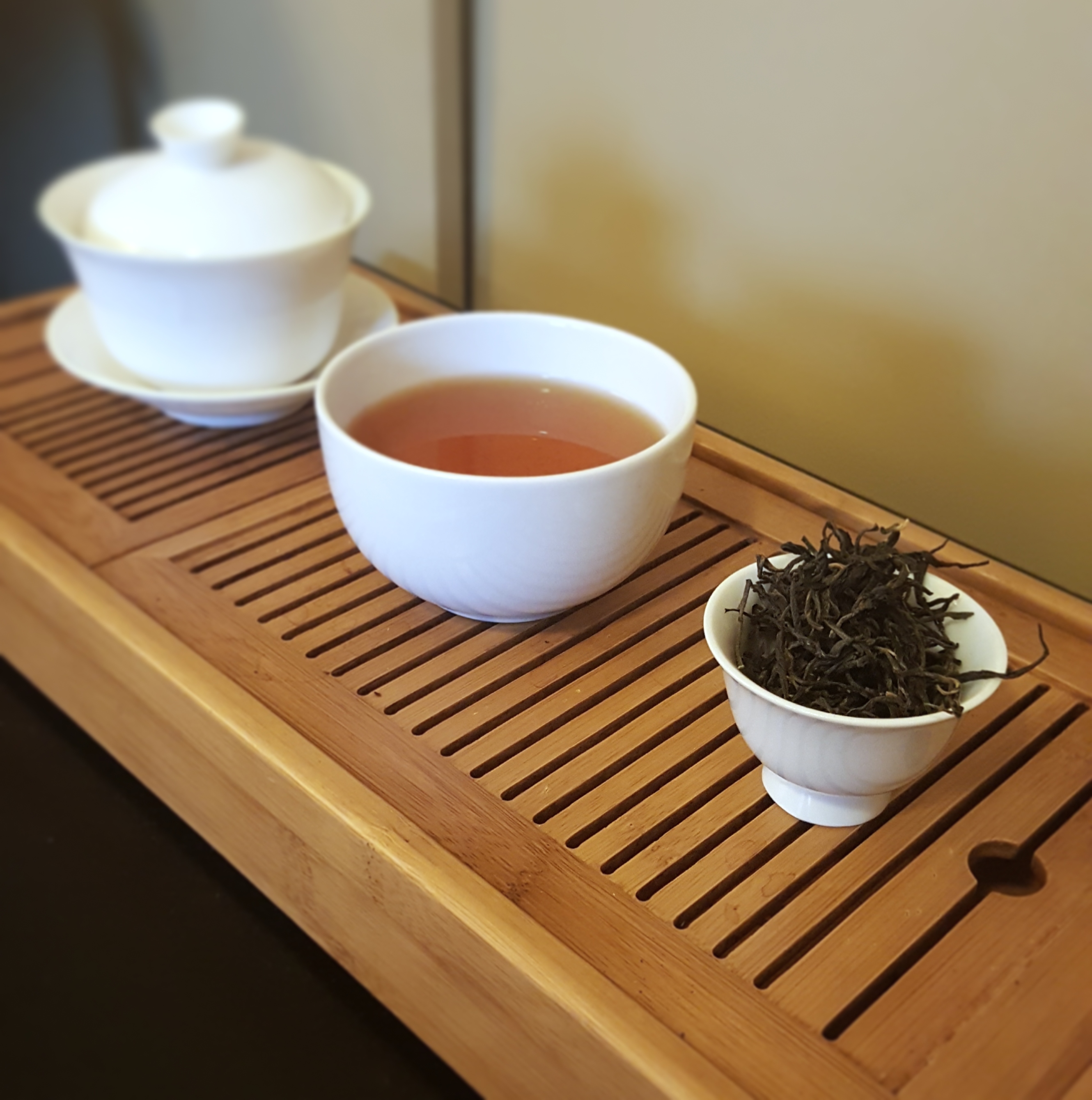
After a three-ish-minute steep, the liquor brewed to a soft copper. I expected something a bit more ruby and thick, but I owed the softness in the liquor to the plump, whole leaves on display. By contrast, the aroma was just as burly as any old-school Assam ever was, but with notable traces of molasses in the steam. Taste-wise, the delivery was gentle before gradually getting stronger—like a hug from a very delicate, but very muscular woodsman.
Second Flush: Royal Tippy Gold and Spring Gentle Black
The two black teas I received from the Lochans were very similar in appearance to the first flush. The only difference I could spot was that the leaves were smaller. Either they were cut to be more uniform, or the late-spring/early-summer plucking focused more on younger leaves—as opposed to the first flush.
In the case of the Royal Tippy Gold, though, the smaller leaf size may have been due to the fact that the entire batch was way more bud-heavy. As such, there were more gold pieces, and the leaves had to match. Not sure what the deal was with the Gentle Black. Unlike either the first flush or the tippy second flush, this looked perfectly normal . . . er . . . by whole leaf Assam standards. Both second flushes also smelled the same—honey, malt, etc.
The brews, however, couldn’t have been more different.
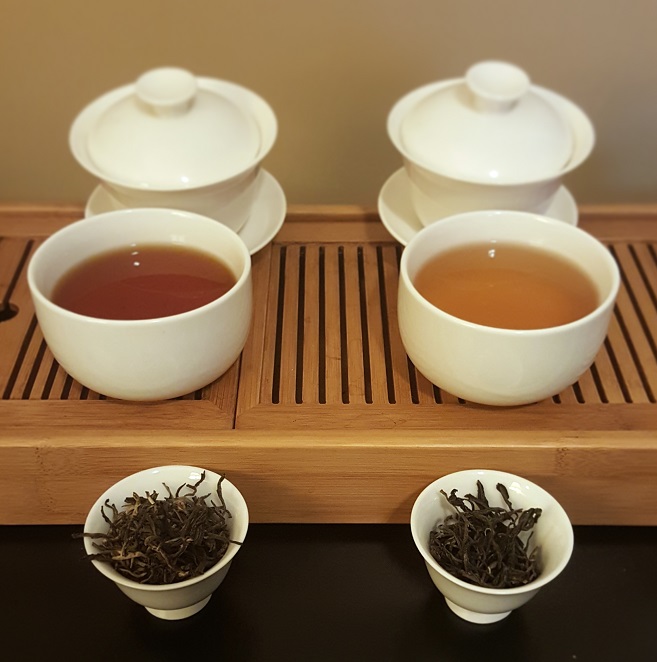
The Royal Tippy brewed a bold and robust copper, while the Gentle Black brewed . . . well . . .gentle—dark bronze at best. The Tippy had fragrance and flavor on par with any chewy, honey-malt-blasted Assam, while the Gentle was another creature entirely. The closest I could compare it to was a Yunnan black tea. In fact, both were like Dian Hongs, except the Gentle possessed more of that region’s wood-sweetness. The more bud-heavy second flush had similarities to Yunnan Jin Cha, but—y’know—Assamese.
One last comment about the Gentle Black: it was a little smoky. Like someone made Lapsang Souchong from Assamica. I’ve never encountered that flavor note in an Assam black tea.
Autumn Flush: Signature Tippy Gold and Xuwoni Tippy Gold
Of the two autumn teas sent, the Signature Tippy Gold was the one that smelled the most “Assam” of the two. I have no clue if the Xuwoni was also processed differently (other than the rolling), but it had a gentler, more floral, aroma. Other than that, save for the shaping of the leaves, both sets of tea leaves had a similar color palate—brown-to-gold, per their description. Lotsa tips.
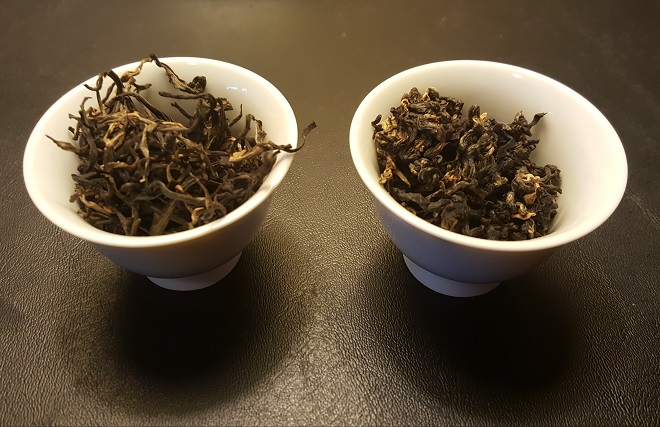
Brewed at the same time, both teas colored about the same; bold-arse copper. The biggest difference was in the—how you say—softness of the liquors? The Signature looked more velvety a liquor than the Xuwoni, which had a bold Assam palette. Steam aroma on both conveyed malt for days, but the Xuwoni had a little bit more of a chocolate bend than the Signature.
Now, on to taste.

There were stark differences between the Signature and Xuwoni on palatial delivery. While both had the same malty profile, plus the small garden sweetness, the actual bodies of both brews different. I thought I measured out the leaves accordingly, but I will confess that I eyeballed it instead of counting the grams used. The Signature was far softer, whereas the Xuwoni was bolder and more layered. The Signature conveyed a poetic subtlety, while the Xuwoni held more nuance in its chewy grasp.
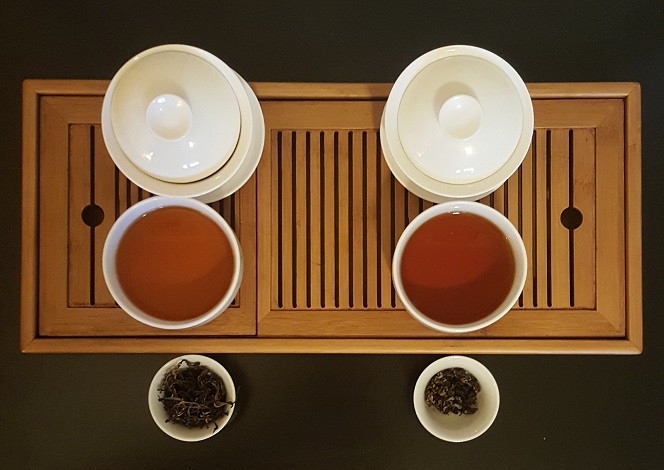
When I finally sat down to write this, I thought it only fitting to take one of the teas and subject it to a gongfoolish prep. The Xuwoni autumnal seemed the most likely candidate, due to its similarities to a Golden Bi Luo Chun from Yunnan in shape and character. And . . .
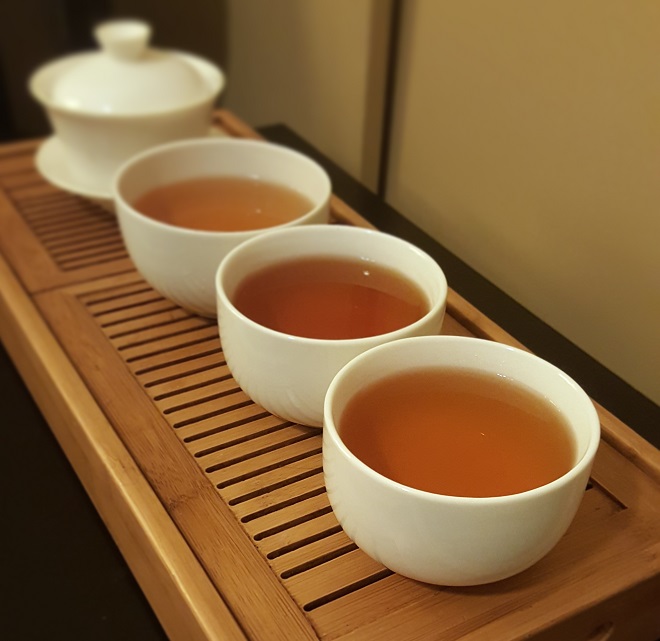
It lasted a good seven steeps, all of which deepened, ebbed, and flowed according to the water temp and time I subjected it to. Very much in the same spirit as a well-honed Dian Hong.
In my last article, I went on a small tirade about the state of Assam tea. Large estates simply aren’t producing anything worth sipping anymore. 2018 was better than most years, but not by much. The signature malty character was all but lost . . . or so I thought.
I found it in a small farm in a small village named after a small tree. And the notes were perfection. That’s a word I don’t use often on this blog: “perfect”. These teas were just that, and I feel incomparably blessed that I got to taste a whole year’s worth of work from this tiny garden.
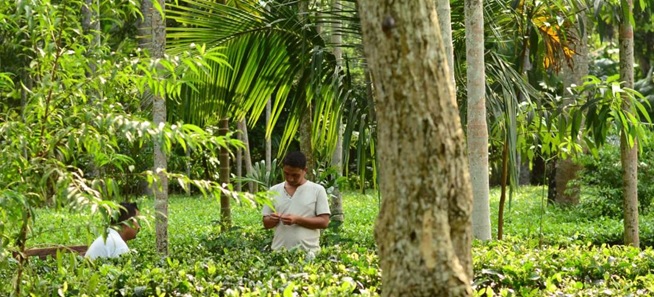
For more information on The Tea Leaf Theory, and the work going on in Latumoni, go HERE.
Leave a Reply